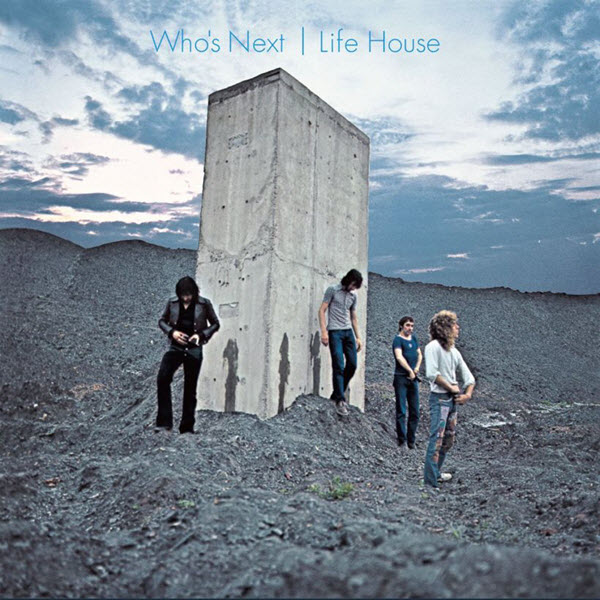INTRO
OK, you're on the detail page. This is a massive, pricy box set, so I'm assuming anyone reading this is already a huge fan of the album. Don't need to sell you on it. However, I would advise anyone picking up this set to listen to it in pieces. There's a TON of stuff here, it's all brilliant, but it can be a little overwhelming. On this page, I'm reviewing the box set disc-by-disc, and I'd strongly suggest that's how you listen to it. Pick out one part of the box and really enjoy it, then put the box away until tomorrow. That way, you avoid the overload that blocks you from really hearing how great this stuff all is. And yes, as I note below, I'd start with the remastered version of Who's Next. Yes, I know anyone reading this review probably has the album memorized note-for-note by now, but it really does set the mood for the rest of the set.
ONE WORD OR TWO?
Full disclosure: this next bit is me obsessing over a detail that has nothing to do with the contents or the quality of the box set, but maybe you'll find it interesting. If not, you can always skip to the next section.
Something that struck me as odd when I saw announcements about the box was that "Life House" was two words. It'd always been a single word, "Lifehouse", as far as I could remember. Every bootleg I'd seen used the single word title. I'd seen references in other books, and they always used the single word title. In 2000, Pete released the Lifehouse Chronicles box set and the Lifehouse Chronicles companion CD, both using the single word title. The companion book for the radio play was titled Lifehouse, and that's how Pete refers to it in his autobiography Who I Am. Heck, the graphic novel included in the box set was announced in 2019 using the single word title (proof). So, it's gotta be one word, right? After the box set was announced, I asked about it on The Who's Facebook page and the answer was that "Life House" was always supposed to be two words. I figured this was just revisionism or someone rationalizing a last-minute screwup. Gotta be what's going on, right? Wrong.
In the box set's book, you can see photos of some of Pete's hand-labeled acetates, and they all have "Life House" as two words. I was surprised. Then I remembered that the sleeve notes on Pete's solo debut Who Came First and The Who's Odds & Sods mention the project. So, I pulled out my old vinyl of both. Both clearly show "Life House" as two words. I was shocked. I definitely did not remember that! Pulled out later reissues of those two albums to see if they were consistent. They were not. The reissues had their text changed to show "Lifehouse" has a single word.
Based on all of this, it looks like Pete really did intend the title to be "Life House" and titled it as such until at least 1974. Somewhere along the way. it got converted into a single word, and that's been the name ever since. Don't know if Pete made that change intentionally or if someone else messed it up. Either way, this box set is a chance to correct the record.
One wrench in all of this: the box shows the Decca single of "Won't Get Fooled Again" issued in the US. That single has the note From The Motion Picture "Lifehouse". So yes, they had it as one word in 1971. However, Decca also had "Relay" titled as "The Relay", "I Don't Know Myself" as "I Don't Even Know Myself" and they jumped the gun on the whole "motion picture" bit. I think it's safe to assume the single word title here is just a miscommunication with Decca.
Oh, and all the homemade reconstructions of Life House that people have made over the years, me included, have the wrong title now. Oh well.
THE DISCS
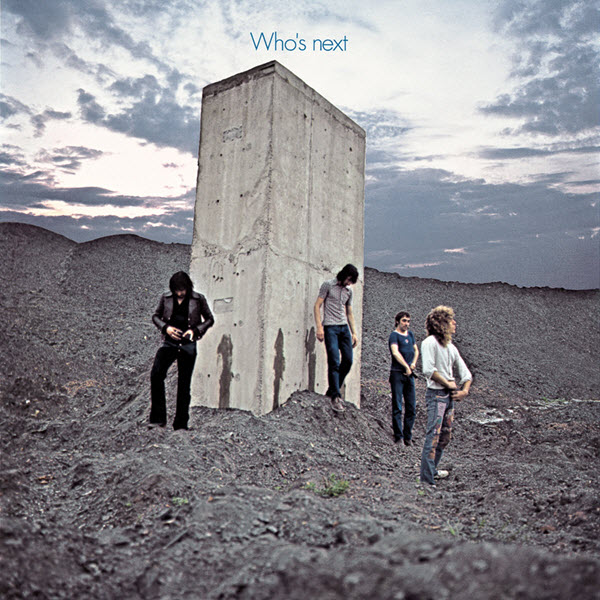
Who's Next
Unlike many super deluxe editions (The Beatles' box sets being a great example), this edition of Who's Next isn't a remix. You won't hear any changes from the original album. However, the remastering job is excellent, and the album sounds superb. As I mentioned above, it's definitely worth giving this a spin before you dive into the rest of the box. It'll remind you just how spectacular the original album is.
tracks: "Baba O'Riley" [2023 Remaster], "Bargain" [2023 Remaster], "Love Ain't For Keeping" [2023 Remaster], "My Wife" [2023 Remaster], "Song Is Over" [2023 Remaster], "Getting In Tune" [2023 Remaster], "Going Mobile" [2023 Remaster], "Behind Blue Eyes" [2023 Remaster], "Won't Get Fooled Again" [2023 Remaster]
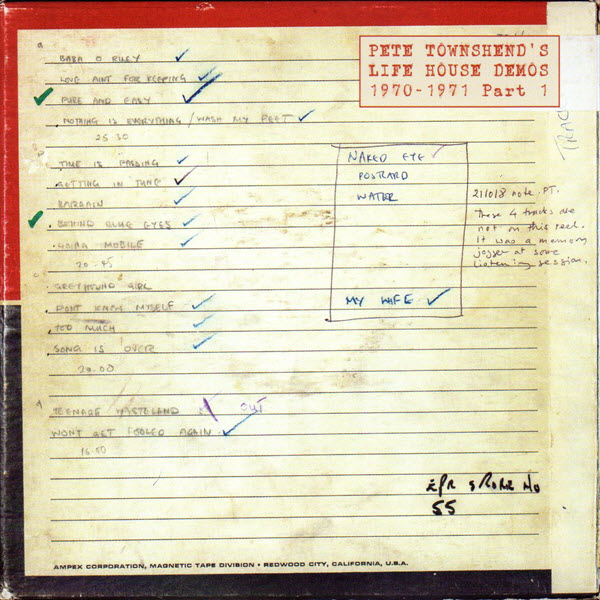
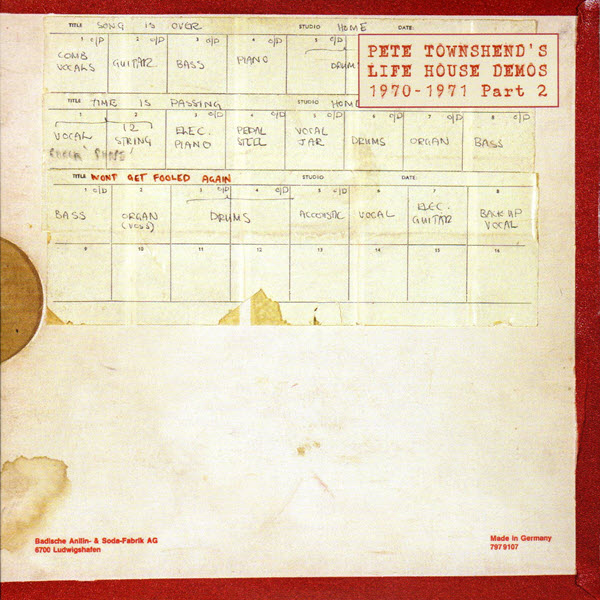
Pete Townshend's Life House Demos 1970-1971
Pete initially released a few demos for Life House on the benefit albums he did for the Meher Baba society as well as his first solo album Who Came First. In 2000, he released a box set titled Lifehouse Chronicles that released two CDs worth. In addition, Life House demos have been a favorite of bootleggers for as long as I can remember. The two-disc Pete Townshend's Life House Demos 1970-1971 certainly has some overlap with those prior releases, but there's some very cool new stuff as well. The highlight being the uncut 13-minute instrumental version of "Baba O'Riley". It's absolutely hypnotic, and I totally get why The Who's released version is much shorter, but the full demo is a fascinating listen. There's one previously unreleased demo "Finally Over", and it's terrific. The rest of the CD is a mix of previously released demos and new mixes/edits/takes on previously released demos, but with the best sound quality I've heard yet.
tracks: "Teenage Wasteland", "Too Much", "Going Mobile", "There's A Fortune In Those Hills", "Love Ain't For Keeping", "Bargain", "Greyhound Girl", "Mary" [Alternate Mix], "Behind Blue Eyes", "Time Is Passing", "Finally Over", "Baba O'Riley" [Original Demo], "Pure And Easy" [Home Studio Mix], "Getting In Tune" [Alternative Mix], "Nothing Is Everything (Let's See Action)", "Won't Get Fooled Again", "Baba O'Riley", "Song Is Over" [2021 Remix], "Pure And Easy" [Olympic Studio Mix], "Mary" [Original Mix], "Baba O'Riley" [First Editing Demo], "Song Is Over" [Original Demo]
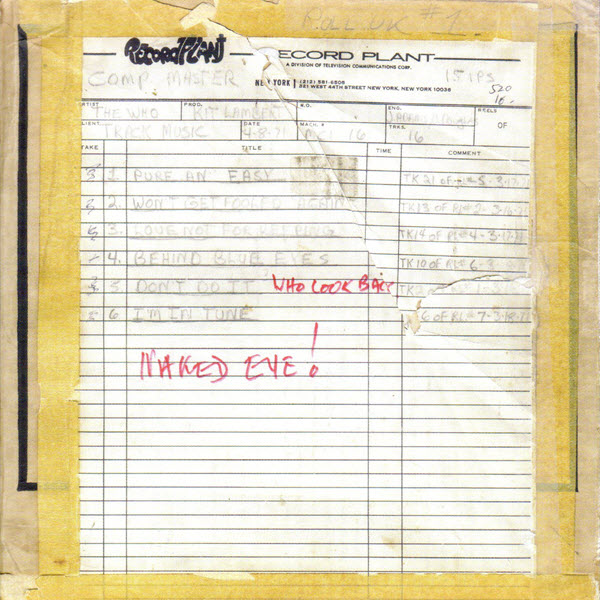
Record Plant, NYC Sessions March 1971
On the next set, you get the first blast of The Who's work on Life House. After listening to Pete's demos on the previous set, hearing these versions makes the band's strengths crystal clear. Along with Roger's more powerful voice, John's complex bass work, and Keith's powerhouse drums, you'll hear Pete's guitar work take a step up in aggressiveness and the band just roars. The album explodes open with "Baby Don't You Do It" and an early take on "Won't Get Fooled Again". These versions don't have the polish that the final Who's Next versions have, but the power is undeniable. The songs are all different versions that you're used to (unless you've heard some of the bootlegs or the 2003 deluxe edition of Who's Next), and they're all a fascinating listen.
tracks: "Baby Don't You Do It" [Take 2, Unedited 16 March 1971], "Won't Get Fooled Again" [Take 13, 16 March 1971], "Behind Blue Eyes" [Version 1, Take 15, 16 March 1971], "Love Ain't For Keeping" [Take 14, 17 March 1971], "The Note (AKA Pure And Easy)" [Take 21, 17 March 1971], "I'm In Tune (AKA Getting In Tune)" [Take 6, 18 March 1971], "Behind Blue Eyes" [Version 2, Take 10, 18 March 1971]

Olympic Sound Studios, London Sessions 1970-1972
Olympic Studios are where the final versions of the tracks were recorded, so this disc is focused on alternate edits and remixes of those songs. You can also hear the transition from Life House to Who's Next with the inclusion of two of John's songs (an unedited version of "My Wife" and a remixed "When I Was A Boy"). A big surprise on this set is a second version of "Naked Eye", recorded after the one originally released on Odds & Sods. This version also adds in some piano from Nicky Hopkins and some acoustic guitar from Pete which gives the song a quite different feel. A really cool moment on the disc is the little warm-up jam before "Getting In Tune". There's not a lot of official recordings of the band just jamming in the studio, and it's really cool to hear it. The "backing track" for "Song Is Over" is included as a tribute to the Hopkins, and this version really shows off his gorgeous piano playing. The disc ends with "remixes" of three songs from 1972, recorded for a follow-up to Who's Next, but also songs that Pete was considering for a revised attempt at Life House. The first two have alternate vocals and the third is unedited, but all three sound more like new versions as opposed to simple remixes. They're quite a treat.
tracks: "Pure And Easy" [New Unedited Remix], "I Don't Know Myself" [Original Mix With Count In], "Time Is Passing" [Original Mix / Stereo], "Too Much Of Anything" [Original Mix With Count In And Original Vocal], "Naked Eye" [Remake Version], "Bargain" [Early Mix With Single-Tracked Vocal], "Love Ain't For Keeping" [Unedited Remix], "My Wife" [Unedited Remix], "Getting In Tune" [Warm-Up Jam / Take 1], "Going Mobile" [Early Alternate Mix], "Song Is Over" [Backing Track], "When I Was A Boy" [Remix], "Let's See Action" [Unedited Original Mix], "Relay" [Unedited Remix With Alternate Vocal], "Put The Money Down" [Remix With Alternate Vocal], "Join Together" [Unedited Remix]
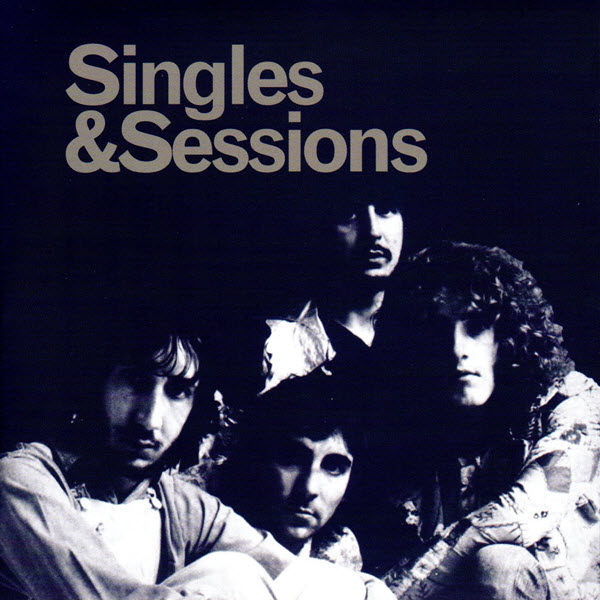
Singles & Sessions 1970-1972
Singles & Sessions 1970-1972 is a catch-all for interesting tracks recorded at the same era as Who's Next that were not part of the Life House project. The disc includes the three non-album singles from that period: "The Seeker", "Let's See Action" and "Join Together", complete* with their original B-sides including the completely bonkers and terrific "Waspman". Along with the single tracks, you also get unedited versions, remixes and remakes of various songs from the same time frame. The unedited version of "Water" (complete with a bizarre and wonderful ending) and an extended "Naked Eye" are the big highlights, and the previously unknown (to me at least) remakes of "Water" and "I Don't Know Myself" were a very cool surprise.
Ok, ok. The B-side of "Join Together" isn't on this CD. That's because the live version of "Baby Don't You Do It" used as the B-side is part of the Live At The Civic Auditorium, San Francisco, Monday 13th December 1971 CD coming up a few discs from now.
tracks: "The Seeker" [Original Single A-Side Mix], "Here For More" [Original Single B-Side Mix], "Heaven And Hell" [Stereo Remix], "Water" [Unedited Remix / Twickenham Sessions / 1970], "I Don't Know Myself" [Unedited Remix / Twickenham Sessions / 1970], "Naked Eye" [Unedited Remix / Twickenham Sessions / 1970], "Postcard" [Original Mix / Twickenham Sessions / 1970], "Now I'm A Farmer" [New Remix / Twickenham Sessions / 1970], "The Seeker" [Unedited Version / Full-Length Remix], "Water" [Re-Make / Take 8], "I Don't Know Myself" [Re-Make / Take 16], "Let's See Action" [Original Single A-Side Mix], "When I Was A Boy" [Original Single B-Side Mix], "Join Together" [Original Single A-Side Mix], "Relay" [Original Single A-Side Mix], "Waspman" [Original Single B-Side Mix], "Long Live Rock" [Original Olympic Mix]
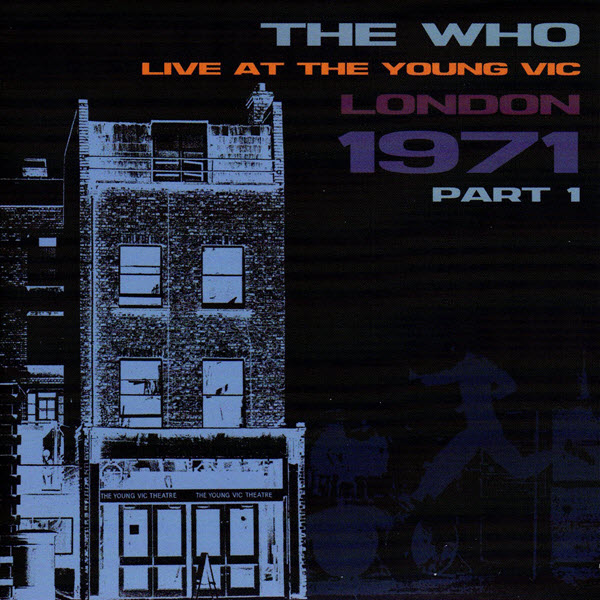
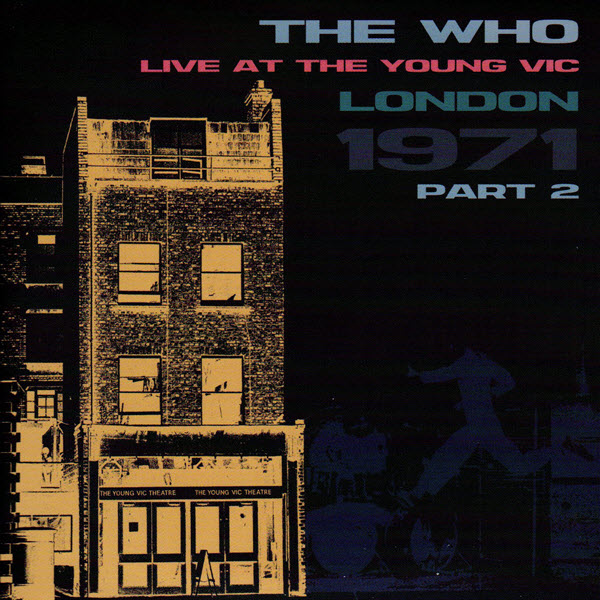
Live At The Young Vic Theatre, London, 1971
The original concept for Life House included a Who performance with the idea of the band and audience becoming one. So, The Who rented out a 400-seat theater, The Young Vic, and began having unannounced shows with whoever was around in the neighborhood as the audience. The band tried to avoid Who fans so that the shows wouldn't devolve into conventional concerts. After the concept had been abandoned and the band started work on what would be Who's Next, one extra show was added at the Young Vic, with an invited crowd of Who fans, to be recorded as a "reference" for the recording sessions. As a result, the show has very unusual set list. The bulk of the show was made up of the new songs the band was in the midst of recording - only four of the eighteen songs had even been released on record at the time. The performance shows The Who absolutely ready to get the new material down on tape; they sound absolutely ferocious throughout the performance. Surprisingly, the one song that still sounds a little rough is "Won't Get Fooled Again". Perhaps the band was still getting used to playing along with a backing track: the performance sounds a little clumsy by comparison to the rest of the show. Also notice that "Baba O'Riley" isn't in the set list either. Perhaps one backing tape song was enough, or they hadn't worked out how they wanted to replace the fiddle solo at the end.
Most of this show was released as the second CD of the 2003 Deluxe Edition of Who's Next. That release omitted "Pinball Wizard", "See Me, Feel Me", "Baby Don't You Do It" and "Bony Moronie". It's nice to finally have the complete show.
tracks: "Love Ain't For Keeping", "Pure And Easy", "Young Man Blues", "Time Is Passing", "Behind Blue Eyes", "I Don't Know Myself", "Too Much Of Anything", "Getting In Tune", "Bargain", "Pinball Wizard", "See Me, Feel Me", "Baby Don't You Do It", "Water", "My Generation", "Road Runner", "Naked Eye", "Bony Moronie", "Won't Get Fooled Again"
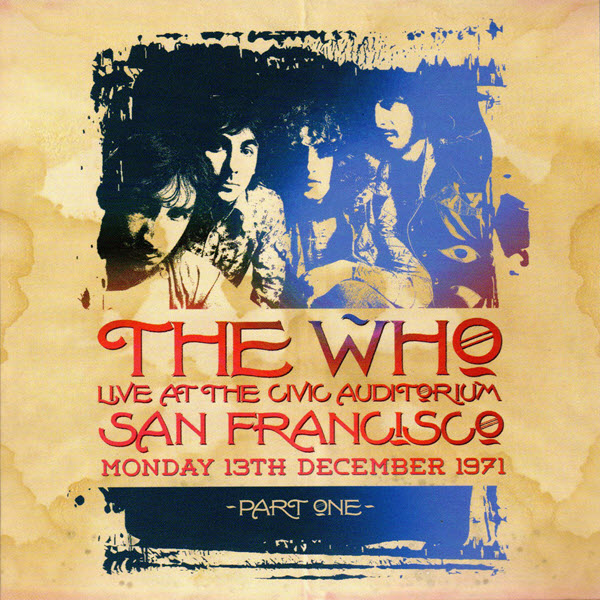

Live At The Civic Auditorium, San Francisco, Monday 13th December 1971
The 1971 San Francisco show has long been considered one of the finest performances in the Who's career, and a full release has been a bit of a "holy grail" release for Who fans. Excerpts have been released before: An edited version of the incendiary take on "Baby Don't You Do It" was used as the B-side on the "Join Together" single in 1972. The single version was great, and the unedited version here is even better. A similarly white-hot version of "Bargain" was released on the Who's Missing rarities album in 1985. The last encore, a cover of "Going Down" was released on the 1987 follow-up Two's Missing. Bootlegs of more of the show have been circulating for ages, but this box set finally releases the full performance in excellent sound quality. And it completely lives up to the hype, rivalling Live At Leeds for the best-ever live performance of the band.
There are some moments in the show you'd never hear later. Before "Baba O'Riley", Roger explains to the crowd that they opted to play a tape of the synth track rather than have a keyboard player. He also notes that it's Pete playing the synth. Until the recent orchestral tours, "Won't Get Fooled Again" had been the band's show-stopping closer. It's odd to hear it mid-set as just another new song. And Pete even comments after "could be rock & roll, maybe not" (presumably because of the synth track). "Won't Get Fooled Again" is definitely rock & roll.
tracks: "Introduction", "I Can't Explain", "Substitute", "Summertime Blues", "My Wife", "Baba O'Riley", "Behind Blue Eyes", "Bargain", "Won't Get Fooled Again", "Baby Don't You Do It", "Magic Bus", "Introduction To Tommy", "Overture", "Amazing Journey", "Sparks", "Pinball Wizard", "See Me, Feel Me", "My Generation", "Naked Eye", "Going Down"
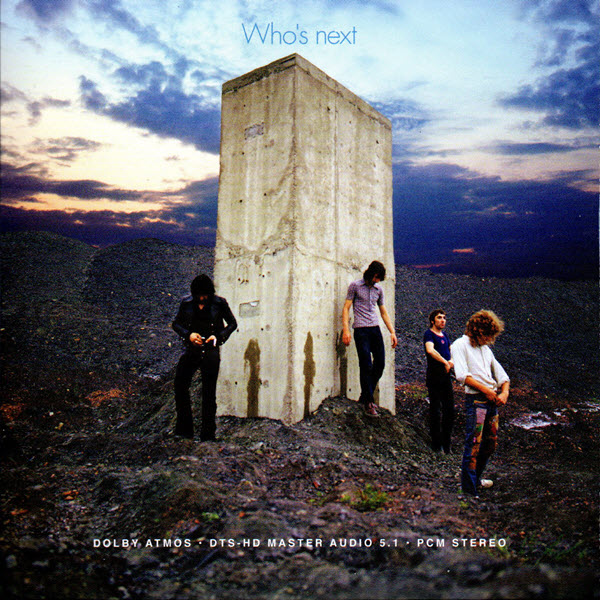
Blu-ray: The Original Album & Bonus Tracks
5.1 thoughts on the Blu-Ray:
1: If you're expecting the sound to swirl around you, you'll be disappointed. In general, the main sound is in the front with some bits in the back, like the synth track from "Baba O'Riley" or the "aaaah" backing vocals from "Love Ain't For Keeping".
2: The multitrack masters for "Bargain" are missing, so that one is in "simulated 5.1". Not ideal, but at least it keeps the running order intact.
3: The multitrack masters for "Song Is Over" are also missing; however, they were able to find outtakes and isolated instrumental tapes, so Wilson rebuilt "Song Is Over" from what he had. Some bits were still missing, so Pete Townshend played the parts fresh on the original instruments. The result is the most interesting song on the 5.1 disc. It sounds like an "alternate mix" of the song with some bits exactly as you know them, and some new bits added. The surround effect on this one is also a little more pronounced, probably due to having things in pieces.
4: "Won't Get Fooled Again" also some subtle differences, which was cool. The synth track there had more movement around the 5.1 space than "Baba O'Riley" does.
5: Of the original songs, "Getting In Tune" and "Going Mobile" had the coolest surround feel, and "Relay" was definitely the best of the non-album tracks.
5.1: While the songs play, you get a little slide show of the same four or five images over and over again.
I was a little disappointed at the beginning of my first listen. Sure, things sounded great, but "Baba O'Riley" through "My Wife" didn't have a great surround feel. But from "Song Is Over" on, I was very impressed. I need to go listen to that first part of the album again to see if my opinion changed. But overall, Steven Wilson's 5.1 mix of Who's Next (and the sundry bonus tracks) sounds amazing. It's absolutely worth a listen if you've got the setup for it.
tracks: "Baba O'Riley", "Bargain", "Love Ain't For Keeping", "My Wife", "Song Is Over", "Getting In Tune", "Going Mobile", "Behind Blue Eyes", "Won't Get Fooled Again", "The Seeker" [Unedited Version], "Here For More", "Now I'm A Farmer", "I Don't Know Myself", "Water" [IBC Version], "Naked Eye" [Olympic Sound Version], "Pure And Easy", "Too Much Of Anything", "Let's See Action", "When I Was A Boy", "Join Together" [Unedited Version], "Put The Money Down", "Relay" [Unedited Version], "Long Live Rock"
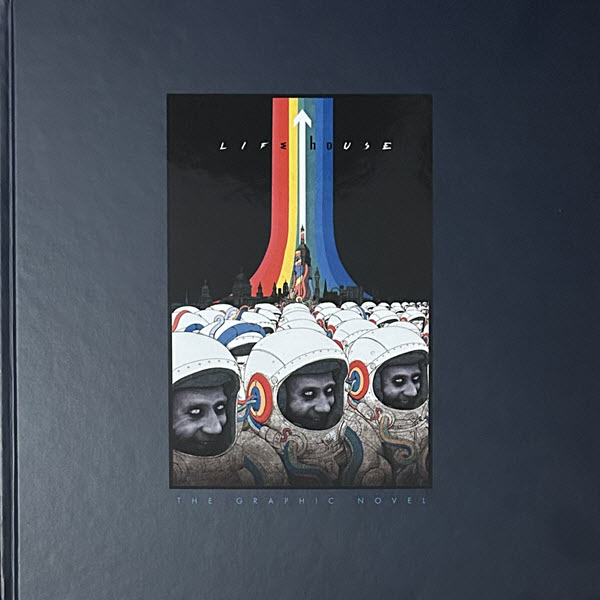
Life House: The Graphic Novel
Welcome to the Life House, people. Your song is here.
- Bobby
Usually, I wouldn't have a book as part of my review, but this graphic novel is too important to the Life House concept to leave it out. The graphic novel, which is "based on the Life House writings and materials by Pete Townshend" finally brings out what feels like the real Life House story (as opposed to the 1999 radio play version which dramatically changed the narrative). This version had many plot points I'd expected from reading various interviews and the hints in Pete's Psychoderelict album, but still had plenty of surprises along the way. As long documented, this is a dystopian science fiction story with mystical elements mixed in. It's set roughly 200 years in the future in a totalitarian UK where the environment has been devastated, music is banned, and vast swaths of people live in environment suits connected to a giant virtual reality network called "The Grid".
I enjoyed the graphic novel quite a bit, and it definitely satisfied my curiosity about what the full Life House story would be like. A few references along the way make me think this was based at least partially on some of Pete's late seventies revisions, but that doesn't take anything away from it. From the main liner notes in the box, I gathered the proposed double-album would have been more of a soundtrack than a self-contained narrative like Tommy or Quadrophenia. I don't think you'd be able to deduce the album running order from reading the book, and that's really not what's it's for (of course, I'm sure people are gonna try). What it does achieve is finally creating a version of Life House that gets Pete's complex idea out for people to enjoy. I'm very glad it's a part of the box set.
